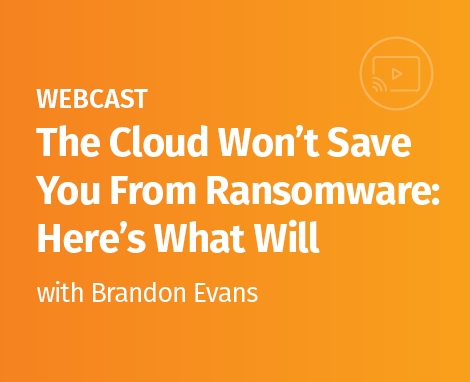The Cloud Won't Save You from Ransomware: Here's What Will
Cloud enthusiasts often tout how using a public cloud service provider helps mitigate ransomware attacks. Unfortunately, this is not true by default. Regardless of where files are stored, an attacker can download them, make them inaccessible to the target organization, and demand a payment for restoring their mission-critical data.
Why the misconception? The first time most people use "the cloud" is when they use OneDrive, Dropbox, iCloud, Google Drive, or one of the many other online file sharing and backup services. These services usually have file recovery capabilities, like object versioning, enabled by default. Public cloud customers might be surprised to learn that similar controls are not enabled by default for Amazon S3, Azure Storage, or Google Cloud Storage.
Join Brandon to learn how to protect your cloud storage platforms with the appropriate security controls for a variety of different common use-cases. He will demonstrate a live supply-chain-based ransomware attack and how a well-prepared organization can use these controls to quickly recover from an attack. You do not want to learn these lessons after a real incident occurs. With the right mitigations, you can prevent a cloud ransomware attack from costing your organization millions, or worse, bring your operations to an indefinite halt.
Learning Objectives:
- Explore each cloud ransomware mitigation strategy and when to use them.
- Understand the tradeoff between ransomware protection and recurring cloud storage costs.
- Learn how to effectively balance protection and cost using automated data archiving and expiration capabilities.
This webcast supports content from SANS Institute SEC510: Cloud Security Controls and Mitigations™. To learn more about this course, explore upcoming sessions, and access your FREE demo, click here.




